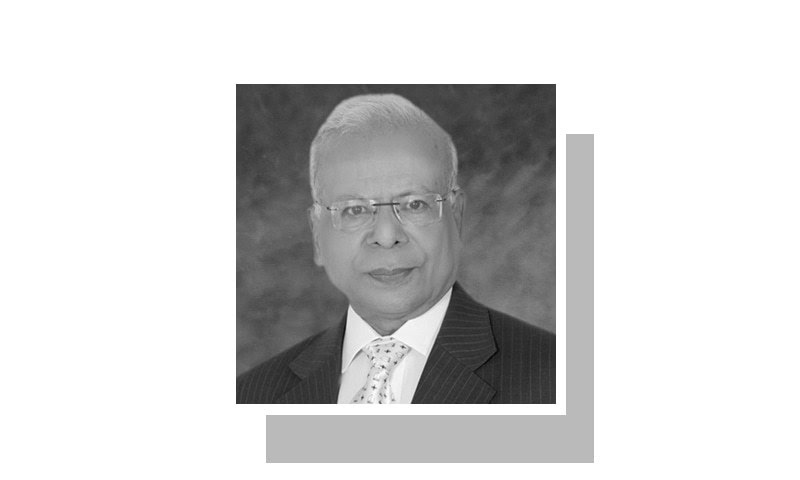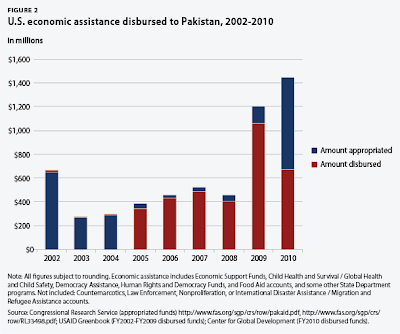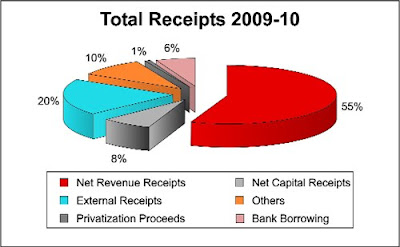Pakistan runs chronic budget deficits of around 5% of its GDP, and its government collects less than 10% of GDP in tax revenue which is among the lowest in the world. A big share of these deficits is funded by foreign aid and loans, making Pakistanis beholden to the interests and whims of major foreign donors and lenders.
Pakistan’s tax policies are among the most regressive in the world. Direct taxes make up less than 3.5 percent of GDP, with wide ranging exemptions to powerful segments of society coupled with governance issues at Federal Board of Revenue, according to former finance minister Shaukat Tarin. The bulk of the tax receipts are collected in the form of sales tax, placing the heaviest burden on the lower-income people who spend almost all of their income on their basic needs.
The other major weakness in public finances is the lack of fiscal effort by the provinces. With some of the largest segments of economic activity such as agriculture, real estate, and services in the provincial domain, the provincial tax receipts total an abysmal 0.7 percent of GDP.
Farm income, mostly earned by the nation’s feudal ruling elite, accounting for about 20% of the GDP is entirely exempt from any income tax under the law. Only about 2 million of 180 million Pakistanis pay income tax. Of them, 1.8 million are salaried and paid Rs.27.37 billion in taxes during ended fiscal 2008-09, according to a report to the Senate by Minister of State for Finance and Economic Affairs Hina Rabbani Khar. The government runs large current account deficits, forcing it to beg and borrow to meet the budget needs. The budget deficit for2008-09 was 4.3% of GDP and it is likely to grow with lower revenue amidst slowing economy in 2009-10. The tax evasion in Pakistan is estimated at Rs500 – 600 billion a year, almost half of the total tax collection of about Rs1200 billion during 2007-08. The untapped amount is almost equivalent to the country’s annual budget deficit.
In a country where majority of the transactions, including purchase of big ticket items, occur in cash, there is widespread tax evasion and a sizable informal economy. The estimates for Pakistan’s underground economy vary from 25% to 50% of the formal economy. A recent World Bank (WB) report concluded that every Pakistani citizen evaded tax amounting to Rs 4800 in the year 2007-08, while the total tax evaded in the period stood at Rs 796 billion.
Food prices have dramatically increased since the current PPP government took power in 2008. These higher food and commodity prices are resulting in the transfer of additional new tax-free farm income of about Rs. 300 billion in the current fiscal year alone to Pakistan’s ruling party’s power base of landowners in small towns and villages in Southern Punjab and Rural Sindh, from those working in the the economically stagnant urban industrial and service sectors who pay bulk of the taxes. The downside of it is an even bigger hole in Pakistan’s pubic finances which is being funded with increased foreign aid and loans.
During the height of corruption under Bhutto-Zardari-Sharif governments in the 1990s, the size of the underground economy rose to almost 55% in 1999, by one estimate. As the military regime of President Musharraf cracked down on tax cheats, the nation’s revenue collection doubled from Rs. 500 million in 2000 to to Rs. 1.04 trillion in 2007-08.
While the income, assets and taxes of the president and top government officials are publicly disclosed and heavily scrutinized by all in the US, no such transparency exists in Pakistan. In fact, tax cheating in Pakistan starts at the top. The richest and the most powerful politicians in the ruling elite pay little or no taxes, setting a horrible example for the rest of the nation.
For example, Benazir Bhutto, Asif Zardari and Nusrat Bhutto declared assets totaling $1.2 million in 1996 and never told Pakistani authorities of any foreign bank accounts or properties, as required by law in Pakistan. Zardari declared no net assets at all in 1990, the year Bhutto’s first term ended, and only $402,000 in 1996, according to a report in the New York Times.
Bhutto’s family’s income tax declarations were similarly modest. The highest income Bhutto declared was $42,200 in 1996, with $5,110 in tax. In two of her years as prime minister, 1993 and 1994, she paid no income tax at all. Zardari’s highest declared income was $13,100, also in 1996, when interest on bank deposits he controlled in Switzerland exceeded that much every week. In June 2008, a senior PPP leader and president of Pakistan’s Supreme Court Bar Association, Mr. Aitzaz Ahsan, who was interior minister in Benazir Bhutto’s first government, told James Traub of the New York Times that most of the corruption and criminal cases against PPP Co-Chairman Asif Ali Zardari which were dropped recently in Pakistan were justified, and that the PPP was a feudal political party led by a figure (Zardari) accused of corruption and violence. After a moment’s reflection, Ahsan further added, “The type of expenses that she had and he has are not from sources of income that can be lawfully explained and accounted for.”
It was only in 2007 that President Asif Ali Zardari returned to Pakistan under an amnesty, euphemistically called National Reconciliation Ordinance (NRO), sponsored by the Americans. However, the Americans know that the corruption charges against Zardari were credible and he, along with his late wife, was convicted in at least one case by a Swiss judge. The conviction was under appeal in Switzerland when Pakistan government withdrew all charges pursuant to the NRO signed by then President Musharraf under pressure from the Americans.
The PPP leadership is not alone in evading taxes. The PML leadership appears to be just as guilty. The entire Sharif family paid a nominal income tax of Rs 250,000, wealth tax of Rs 550,000 and agriculture tax of Rs 130,000, considering their vast assets and properties of at least 23 sugar and textile mills and huge agricultural land, according to the News. The tax evasion by the the Sharif family was the reason that the donor agencies giving aid to Pakistan in late 1990s insisted on publishing tax records of all lawmakers and senior bureaucrats, The News said, adding that for this reason, the donor agencies insisted on broadening the tax net to prop up government revenues.
As Pakistan faces a severe economic crisis and the current leaders appear ready to mortgage the nation’s future, the chances of the ruling elite setting a good example by paying their taxes in full appear rather remote. In fact, the feudal politicians are fighting the current IMF condition for even a modest tax on farm income. The only hope for a fairer tax system and improved collection from the rich and powerful to fund education and health care lies in serious and sustained pressure on Pakistan’s ruling elite from the donors and lenders, backed by the United States.
To conclude this post, let me quote former finance minister who said the following in a recent op ed: “At the heart of it, these issues are related to governance. This state of affairs is a manifestation of a broader challenge that Pakistan has grappled with virtually since independence – the shifting of the burden of responsibility by a small, self-serving and venal elite to the rest of the population.”













